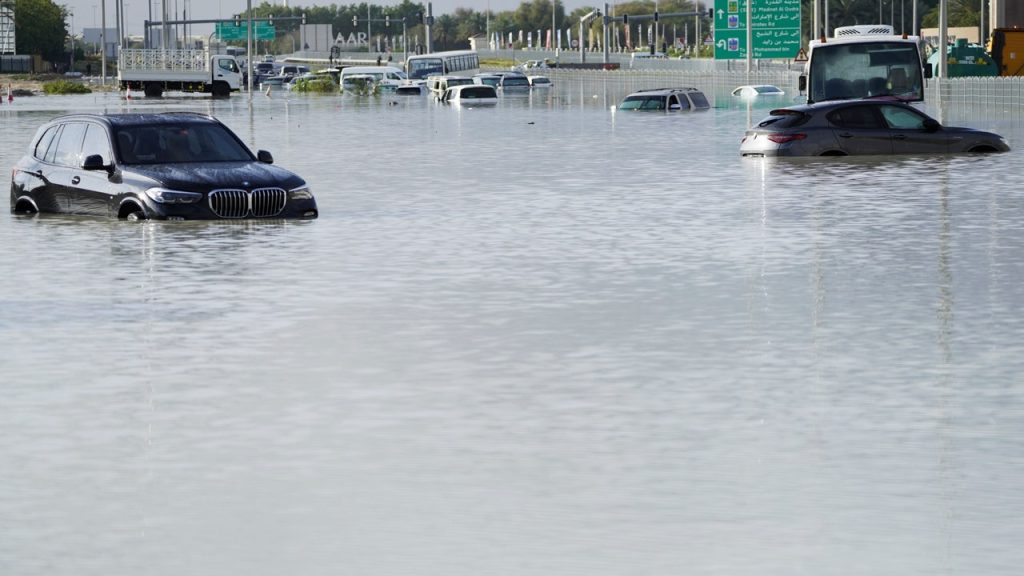Flooding overwhelmed the United Arab Emirates, a country accustomed to minimal rainfall, with scientists ruling out cloud seeding as the cause. The intense rainfall, equivalent to what is expected with human-made climate change, exceeded what cloud seeding could produce. Experts indicated that the type of severe flooding witnessed in the UAE on Tuesday was far beyond the capabilities of cloud seeding. The flooding was forecast days in advance and attributed to three low-pressure systems moving toward the Persian Gulf along the jet stream.
Climate scientists emphasized that focusing on cloud seeding distracts from acknowledging the effects of climate change on extreme weather events. Researchers noted that global warming leads to heavier rainfall due to a warmer atmosphere that holds more moisture. Although cloud seeding aims to stimulate rain by introducing particles into clouds to attract moisture, its effectiveness remains a topic of debate. While some studies suggest it may generate additional precipitation, the broader impact is a subject of uncertainty among experts.
Governments in regions facing droughts like the U.S. West and UAE invest in cloud seeding technology despite uncertainties about its efficacy. Various countries in Asia and the Middle East utilize cloud seeding as a means of increasing water supply, with the U.S. Bureau of Reclamation and Utah allocating significant budgets for these purposes. The method is often employed in drought-stricken regions to potentially augment water resources, with limited conclusive evidence regarding its overall effectiveness.
The Middle East experiences infrequent but intense tropical storms, surpassing typical weather patterns in other parts of the world. While cloud seeding may play a role in enhancing precipitation on the periphery, it is unlikely to generate significant impacts during substantial storms. Massive tropical storms in the Middle East, such as the recent deluge in the UAE, underscore the region’s vulnerability to extreme weather events and the challenges associated with managing water resources.
Analyses of extreme weather events in the Arabian Peninsula suggest a rise in impactful storms due to a warming climate, reinforcing the need to address climate change impacts. Scientists caution against attributing singular weather events to cloud seeding, highlighting a broader climate context for interpreting extreme precipitation occurrences. Regardless of methodological advancements in weather modification, the complex dynamics of atmospheric forces pose challenges to conclusively demonstrate the effectiveness of cloud seeding in altering significant weather patterns.


